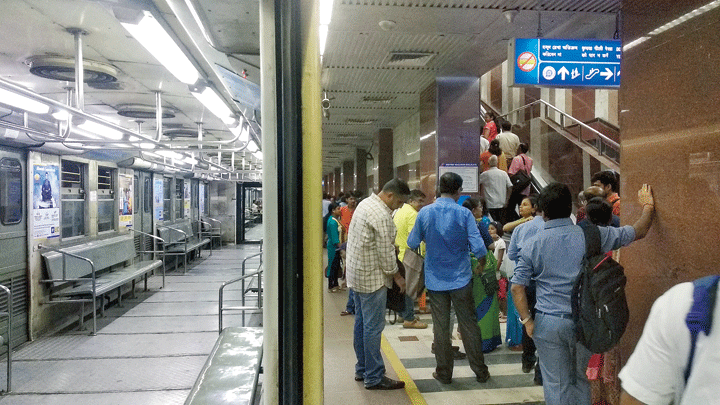The Metro authorities took as long as 90 minutes to detect the snag that crippled Metro services on Monday afternoon, prompting questions on the utility’s efficiency in handling an emergency.
It took more than two hours to fix the problem and restore normality.
CCTV footage could have helped the authorities detect the snag within a few minutes, a Metro official said on Tuesday, conceding that things could have been better handled.
The services were disrupted for two hours from 12.30pm on Monday after sparks were spotted in the tunnel near Rabindra Sadan station while a Dum Dum-bound train was pulling in. A damaged cable is said to have caused the sparks.
When a team of Metro engineers and technicians detected the spot where the cable was ruptured, barely 50m from the platform, it was past 2pm, officials said. Before that, the team did multiple rounds of the stretch between Rabindra Sadan and Maidan on foot but found nothing.
Electricity supply to the third rail, from where trains collect power, was suspended for the inspection.
After the search drew a blank, the supply was restored and sparks flew again from the affected spot, an official said.
“The first set of sparks only lasted for one or two seconds but the smoke they produced persisted for a longer duration. The team spent a lot of time scouting for the source of the smoke,” the official said.
CCTV footage assessed on Tuesday showed that a Railway Protection Force jawan and some passengers on the platform of Rabindra Sadan station were the ones who spotted the sparks. “They had raised their hands to signal the motorman to stop the train,” said an official who saw the footage.
On Monday, a section of Metro officials had told this newspaper that the driver of the train was the first to spot the sparks. But CCTV footage showed that the train was still some distance away where the sparks were noticed, the official said on Tuesday.
The control room was alerted and senior officials from various departments of the utility monitored the situation. Some of them were sent to Rabindra Sadan station.
“Had the footage been assessed right after the sparks, the team would have known where to look for the snag. That would have saved a lot of time. But the realisation dawned on us a little too late,” said a senior official.
The general manager has ordered a probe into the incident. But prima facie it appears the cable’s damage was caused by a “foreign object”.
The tracks are physically inspected every night after the end of commercial services. “We follow a maintenance schedule, under which each stretch is split into smaller areas. A handful of smaller areas are inspected every day and the entire stretch is covered within a stipulated period. It is not possible to examine every inch every day,” said another official.
Some Metro officials said the maintenance schedule could not be followed at times because of a rise in the number of rakes and trips.
The number of emergency drills at Metro stations has gone up since the December 27 fire in the undercarriage of an air-conditioned train near Maidan station.
But Monday’s incident showed the deficiencies in the emergency response system of the city’s transport lifeline, that is still the most reliable mode of transport for around 7 lakh people every day.
“The general manager has ordered an inquiry. Everything will be clear after the report is tabled,” Metro spokesperson Indrani Banerjee said.











